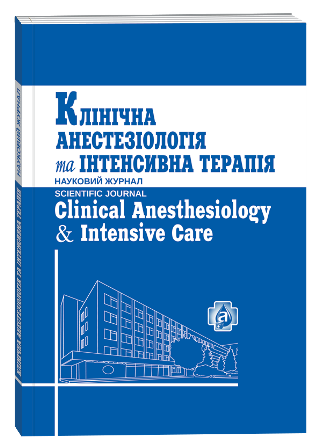RIVAROXABAN AS THE MAIN COMPONENT OF THE TREATMENT OF PATIENTS WITH OBLITERATING ATHEROSCLEROSIS OF THE LOWER EXTREMITIES
DOI:
https://doi.org/10.31379/2411.2616.13.1.10Keywords:
obliterating atherosclerosis, thrombus formation, hemostasisAbstract
Relevance. Along with the problem of cardiovascular disease in recent years, there is an increased interest in angiology, due to the prevalence among the population of diseases with violation of peripheral circulation. Objective of the study. The purpose of this study is to evaluate the functional state of the vascular – platelet, coagulation and fibrinolysis of the hemostasis system and their disorders with the help of low – frequency vibration piezoelectric thromboelastography (NPTEG) in patients with obliterating atherosclerosis of the lower extremities on the background of treatment. Materials and methods. The initial state of the hemostatic system in 45 patients treated for obliterating atherosclerosis of the lower extremities at the Odessa Regional Clinical Hospital was assessed. During surgery and in the postoperative period, patients received analgesia based on epidural administration of bupivacaine, and they also included 15 mg rivaroxoban 2 times a day from the first postoperative days. The dynamics of the hemostatic system in this group of patients was assessed using low-frequency piezoelectric thromboelastography (NPTEG) on the first day prior to surgery, and on days 3, 5 and 7 after. Results. The results of the study indicate that in patients with obliterating atherosclerosis of the lower extremities, there are pronounced disorders of the aggregative state of the blood, where hypercoagulation dominates the anticoagulant potential. During treatment with epidural administration of bupivacaine, rivaroxaban 15 mg, 2 times a day, from the first postoperative day, significant changes were observed towards normalization in all components of the hemostasis system using the method of NPTEG (p <0.001). This indicates the effectiveness of intensive care using rivaroxaban against the background of a systemic pathological process, the normalization of hemostasis system indicators in patients with obliterating atherosclerosis of the lower extremities.
References
Bauersachs, R., Zannad, F. Rivaroxaban: A New Treatment Paradigm in the Setting of Vascular Protection? Thromb Haemost., 2018, vol. 118(S 01), S12-S22. doi: 10.1055/s-0038-1636530.
Kearon, C., Akl, E.A., Comerota, A.J. Antithrombotic Therapy for Venous Thromboembolic Disease: American College of Chest Physicians Evidence-Based Clinical Guidelines (9th Edition). Chest, 2012, vol. 141, pp. 419–494
McDermott, M.M. Functional impairment in peripheral artery disease and how to improve it in 2013. Curr Cardiol Rep, 2013, vol. 15(4), p. 347. doi: 10.1007/s11886-013-0347-5.
Tagalakis, V. et al. Incidence and mortality from venous thromboembolism in a real-world population: the QVTE Study Cohort. Am. J. Med., 2013, vol. 126, pp. 13–21.
Sapelkin, S.V., Kuznetsov, M.R. Conservative treatment of patients with peripheral arterial diseases: opportunities and existing problems.[Konservativnoye lecheniye bol’nykh s zabolevaniyami perifericheskikh arteriy: vozmozhnosti i sushchestvuyushchiye problemy.] Angiologiya i sosudistaya khirurgiya, 2016, vol. 4, pp. 169-175. (In Russ.)







